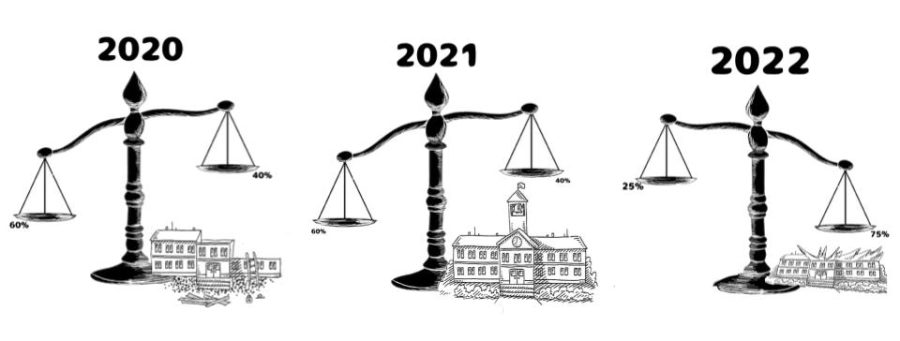New grading categories unbalanced, concerning
December 22, 2022
Gone are the days of E-Learning’s casual grading system (60% tests and 40% classwork). In the 2022 – 2023 school year, homework is now only 25% of a student’s grade, while assessments are 75%. What seems like a small change can actually prove detrimental to the student population.
In the past, different classes have had different methods of grading. While English classes weighted assessments around 40%, art classes weighted them around 80%, and math classes weighted them at 30%. Different classes require different weighting, as their assignments differ by subject, but this isn’t the way it’s done anymore.
Students’ grades are showing their truest colors as finals quickly approach. For example, tests that seemed easy may turn out to actually be failed attempts, and the sooner that the end of the semester approaches, the harder those test grades could become to fix. Now that these assessments are weighted so heavily, these grades take much more perfect scores to raise.
Considering classes like English that involve writing essays or presenting large projects for an assessment grade, this problem only seems to dig deeper. These assignments reasonably take some time to grade; however, that time can typically range anywhere from two weeks to two months. If a student receives a destructive grade on an assignment put in the grade book right before a midterm or a semester’s end, that grade is practically set in stone. There’s hardly much time left to make up for it with busywork that’s only worth 25% of an overall grade, if the teacher chooses to put it in the grade book. That busywork is what determines a student’s grade after a final – something that can’t be changed at the end of a semester.
Even the highest achieving students can be affected by this new plan. A’s and B’s and even C’s alike are easily dragged down by grades that are just as good. A score on any test even one point lower can bring a grade down. This weighting is dramatic and can be the deciding difference between a C and a B – a considerably unfair problem.
Frankly, the new system seems to encourage a lack of effort into homework. Why should the students who try their hardest everyday have to settle for the students who give minimum effort, if any? Why should their grades suffer because they tried harder? If homework is only 25% of a grade, then why do any of it? Why not just succeed on the test and ignore classwork altogether? Honestly, there are no real answers to these questions, or at least, no satisfying ones. No rewards are offered to those who do the most – instead, this system pats the head of idle minds.
Instead, we suggest a return to the way things were before the COVID-19 shutdown: a student’s grade weight depends on the class and on the teacher. A culinary class shouldn’t be following the same grading rules as a science class if they take a different amount of tests or hand out a different amount of assignments. We, at the very least, recommend a stronger grading emphasis on in-class work instead of homework in order to give those assignments a better chance. A student is not only measurable by the way they test.



